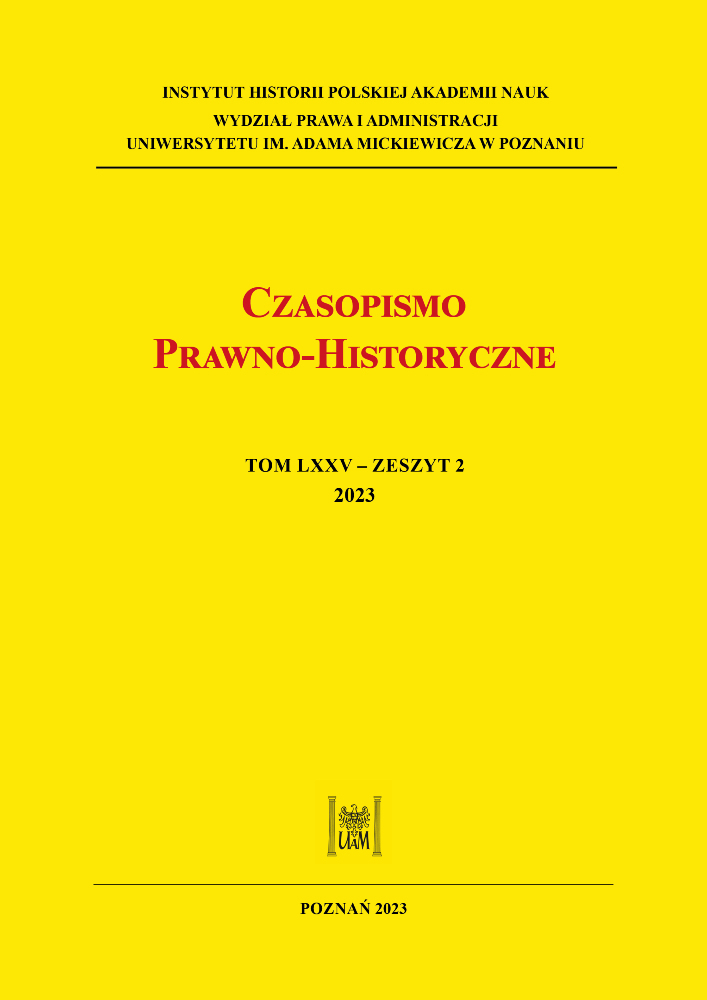Zabójstwo kryminalne w Generalnym Gubernatorstwie.
Studium przypadku z zakresu stosowania
niemieckiego wojennego prawa karnego
Criminal homicide in the General Government. A case study concerning the application of German criminal law during wartime
Author(s): Hubert MielnikSubject(s): Criminal Law, WW II and following years (1940 - 1949)
Published by: Uniwersytet Adama Mickiewicza
Keywords: criminal law; General Government; homicide; Nazi law; Third Reich;
Summary/Abstract: The article is a case study concerning the application of the Nazi’s special criminal lawin the General Government during wartime, specifically the Juvenile Felons Ordinance of4 October 1939. A detailed analysis of one criminal proceeding from the moment the policereceived information about the crime until the execution of the sentence is carried out. Thecase which was chosen for the present analysis was selected due to its specific character asit involved a double homicide (murder) committed by a juvenile offender whose victimswere Jewish. The paper presents the practice of application of criminal law in the GeneralGovernment, which was characterized by its expedited and simplified nature. It also high-lights certain aspects of the law's ambiguity, the defendant's uncertain situation, and a lackof effective possibilities of defense. The development of Nazi criminal law veered towardsperpetrator-based criminal law. The criminal law of Nazi Germany ruthlessly sentencedpeople to death and expanded its application.
Journal: Czasopismo Prawno-Historyczne
- Issue Year: 75/2023
- Issue No: 2
- Page Range: 183-206
- Page Count: 24
- Language: Polish

